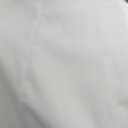Dihydro-β-agarofuran sesquiterpenes from celastraceae species as anti-tumour-promoting agents: Structure-activity relationship.
Palavras-chave
Resumo
Inhibition of tumour promotion in multistage chemical carcinogenesis is considered a promising strategy for cancer chemoprevention. In an ongoing investigation of bioactive secondary metabolites from Celastraceae species, five new dihydro-β-agarofuran sesquiterpenes (1-5), named Chiapens A-E, and seventeen known ones, were isolated from Maytenus chiapensis. Their structures were elucidated by extensive NMR spectroscopic and mass spectrometric techniques, and their absolute configurations were determined by circular dichroism studies, chemical correlations and biogenic means. The isolated compounds, along with twenty known sesquiterpenes, previously isolated from Zinowiewia costaricensis, have been tested for their inhibitory effects on Epstein-Barr virus early antigen (EBV-EA) activation induced by 12-O-tetradecanoylphorpol-13-acetate (TPA). Thirty three compounds from this series showed stronger effects than that of β-carotene, the reference inhibitor. The structure-activity relationship (SAR) analysis revealed that the type of substituent, in particular at the C-1 position of the sesquiterpene scaffold, was able to modulate the anti-tumour promoting activity. Compounds 3, 6, and 33 showed significant effects in an in vivo two-stage mouse-skin carcinogenesis model.


